I was delighted to meet Licey a couple of weeks ago in my Soft Pastel Facebook group. We were discussing blending tools and she told me she is blind. This is something close to my heart as I nearly lost the sight in one of my eyes in 2010. I was really interested in Licey’s Art Journey and she has kindly written about it for you to read too. It’s very inspiring and I hope it helps / encourages you if you are struggling right now.
Licey’s Art Journey
When someone mentions art, what is the first thing that comes to mind?
- A vision of someone at an easel, using their arms to paint expressive strokes of color onto the canvas?
- An image of a Potter, maybe, with a head spinning with inspiration to mirror the lump of clay spinning on their wheel?
- Color? Fine detail?
- Pictures which look like photos?
- Pictures which look like a unicorn threw up on them?
- Pictures covered with glued macaroni if that’s your bag?
Now imagine, for a minute, that all of the above are suddenly impossible. Imagine not being able to study that reference photo, or observe that still life (seriously- why do so many people paint pears? Like it’s always pears! I may make my next project a study of a toilet roll, or a satsuma if I’m feeling exceptionally rebellious! Anyway, I digress…).
Imagine not being able to move freely enough to make those expressive strokes with a paintbrush… But don’t imagine too hard. Because you can. And I know this, because I can. I’m an artist. I work mainly with colored pencils and pastels, although I’ve dabbled in acrylics. I’ve taken commissions, and I’ve made money from my work.
I’m also blind. And I have Fibromyalgia, ME, and Ehlers-Danlos syndrome; all of which affect my mobility.
So, in an artists world, you would think I’d be screwed, right? Nope!
I’ve been registered blind since my optic nerves stopped developing when I was three months old. I see less than a metre from the one eye I can see out of, walk with a cane, annoy people at Alton Towers by jumping the queue, walk into plate glass windows…you get the picture!
Instead of focusing on what I can’t see, I focus on what I CAN see. I can enlarge pictures on my phone so that only a tiny section shows- and I can draw that section. Then I can move onto the next, and the next. Sure, it takes centuries, but at the end of it, I’ve still created a picture!
Regarding painting or drawing landscapes, or buildings etc, from life: I can tell how tall a building is through Echo Awareness (I can hear lamp posts too! Cool, huh?). The sound of the wind tells me where the trees are, how long the grass is, and the fact that I can see vague shapes helps too!
I do always have a colorful nose though! I have to work so closely toward the paper that I can sometimes get a face full of pastel! You think that’s bad? Imagine sneezing in this position ![]()
Visual tutorials are easier for me to follow than you think. Close your eyes for a second next time you watch, for example, a soft pastel video. Do you hear the difference in “scratch volume”, depending on how much pressure the creator is using? I do.
[note from Sue: In my soft pastel tutorials I teach you to listen to what Lisey can already hear]
Basically, I hear what you see. My work is not perfect. Who’s is? It’s mine. That’s what matters. No one is marking your work out of ten. There’s no such thing as “perfect”, or “right”. You do you!
My mobility issues sometimes limits whether I can actually create artwork or not. If I’m on a “bed day” then painting is out, as the level of movement would have my joints singing Ave Maria, and it wouldn’t be pretty. I get around this by setting up my “bed-art studio”. I have an extremely light, fold up easel which is comfortable enough to balance on my knees (which I have to draw up toward my chest to get close enough to see). I use light materials such as colored pencils and small pastels, and I accept the fact that it won’t be my best work that day.
I’ve heard from several people who suffer from chronic illnesses that they’re scared to take up art because of their pain. I’m not going to lie – art uses spoons***, and sometimes I don’t have any spare spoons to use on physically creating. But its doable, even on an off day! If you don’t have the spoons*** to pick up a soft pastel, scribble with a short pencil (easier to hold when your hands are singing Ave Maria out of tune!) In a tiny sketchbook. When even this isn’t doable, I binge watch tutorials and art material reviews on YouTube. That way, I’m always learning. We’re all always learning! Above all, don’t let anyone tell you you’re incapable of creating art. Because if I can do it, anyone can do it.
***Vie Portland from https://www.vieness.co.uk/ has helpfully supplied the explanation about spoons… “Spoon theory is a useful way to explain how disability and chronic illness can impact on pain and energy levels. A non-disabled person may have twenty spoons a day; a disabled person already starts at a deficit with ten spoons a day. Everything we do has a spoon cost, but it’s not a consistent cost, so it’s difficult to predict; if we have slept well, an activity may only be the equivalent of half a spoon, whereas, another day, after a bad night, it might equate to two spoons.
Written by Licey Hastings
Licey’s Paintings:
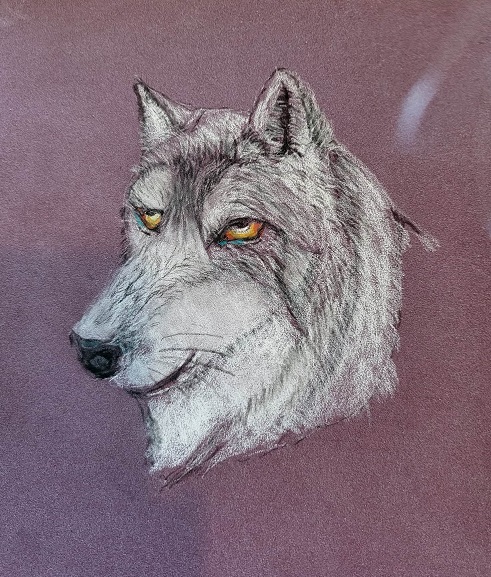
Licey’s favourite painting (first time using soft pastel)
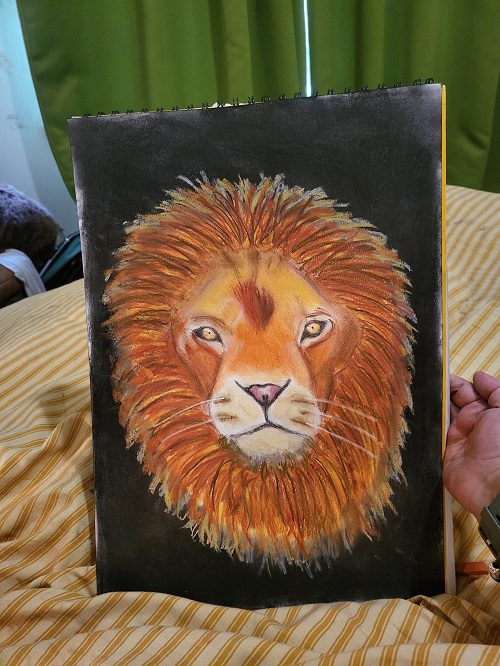
Licey in her bed-art-studio
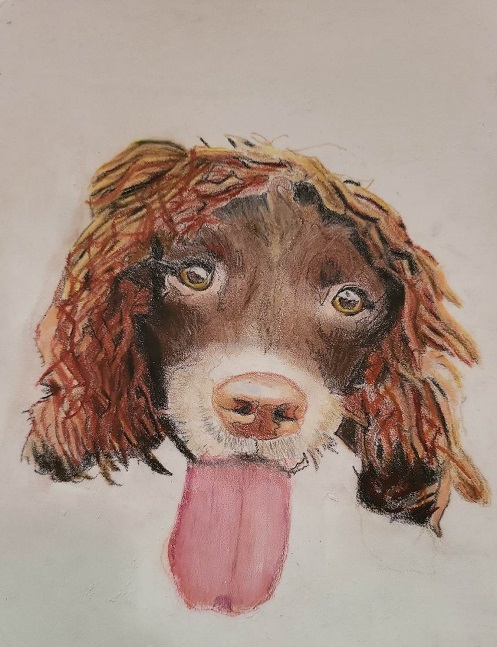
Commissioned work
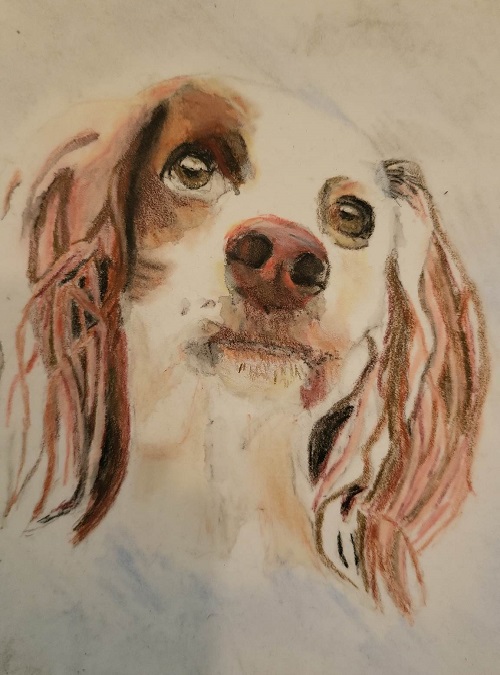
Commissioned work
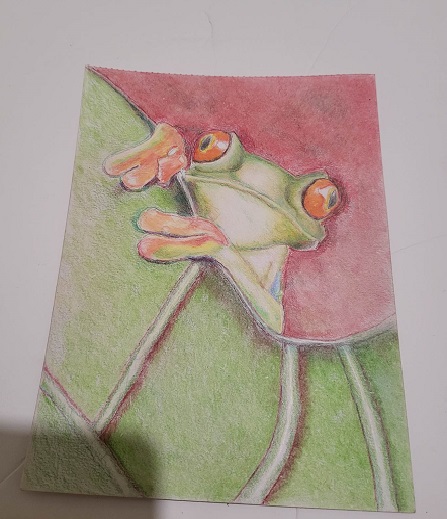
Licey and I would love to know if this blog has inspired you or touched your heart in away way… let us know! 🥰

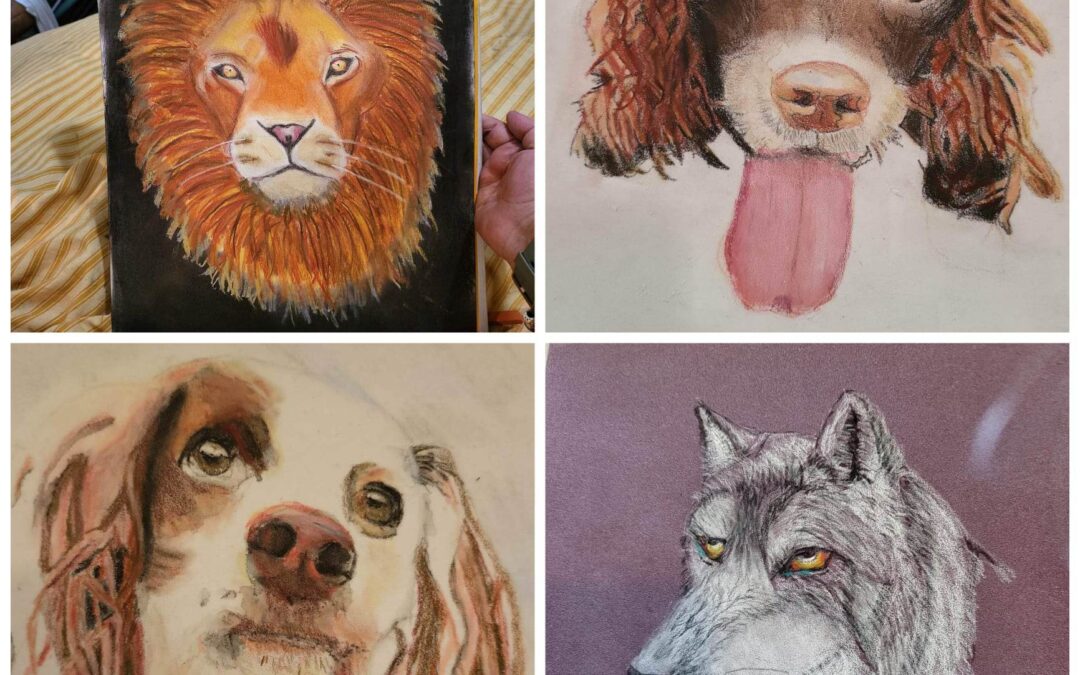
Wonderful and inspiring blog. Thank you Licey!
thanks for your comment Rod! Happy Christmas.
Good grief, this is fantastic! What a brilliant artist
Very inspiring. I have lupus and reumathoid artritis that gave me some hard days. I understand you so well. Blessings!
Wow! I will never again be so critical of my own artwork as I can see and do with all my spoons. Liceys work is amazing in more ways than you can count spoons!
Thank you. I feel honored to be here!
This is so inspiring for me, Licey! I have ME, arthritis, am colourblind and I’m registered partially sighted. I’m also a type 1 diabetic of almost 56 years duration I’ve lost my artistic mojo for months, following a couple of years of major life events. I must follow your amazing example and focus on what I CAN do and stop worrying about what I can’t! My NY resolution:
Wake up Tricia, and hear those roses! Xx
Hi Tricia, so pleased this post inspired you. Are you a member of my group http://www.facebook.com/groups/pastelforbeginnersandbeyond ?
Thank you for sharing your brilliant work. Yey for spoon theory!!
I have secondary progressive MS. I am also a pastel artist, I’ve had to use my non dominant hand as the left gave up on me!
It’s great to hear about and see the work that artists who have a diff ability.
I’m speachless and humble…….
Me too Nina, isn’t she awesome!!
Licey, you and your work are amazing.
Next time I think I can’t be bothered to make the effort, I will think of you and what you overcome. It is humbling to think what it takes for you to make your paintings.
Keep doing what you are doing.
What an inspiration! The spoon explanation is very good.
I am in awe of the skill and courage of this artist,people like this bring joy and hope to the world.
I’m humbled to read this and in awe of a talent that comes from your wonderful heart and soul. Such a joy to see your paintings and I look forward to seeing more.
Oh wow, what an amazing person, and what an inspiration to the rest of us.
Very inspiring and motivating. No complaining when things aren’t going well. Thank you for sharing this and the reminder of what we CAN do!
Licey, thank you so much for writing your blog and sharing your life. I think you are amazing, a true inspiration and a really wonderful artist. Wishing you the very best of everything and thanks for making me stop and think that I should just get on with it ……. .
This was amazing and yesterday I went to have my eyes tested, I have macular degerative disease, and now there is blood leaking from the eye, I was so upset because due to other things happening in our home I haven’t done my tutorials or any art for two months, this is helping me that once Christmas is passed, I will focus on what I am able to do and not what’s happening to me…God Bless you Licey, and thanks for sharing your journey and love of art.
I am preparing to devote more time to art in 2023 and really try to achieve something and this has arrived on the very same day I was setting my goals, and has given me more belief and drive to pursue my dreams. I will need to keep this in mind throughout the year! Inspiring! Thank you.
You are an inspiration, thank you for sharing your story and your art, it’s wonderful x
I know the spoons thing too, you are so inspiring, I am humbled. Your paintings are beautiful
I love the style and vibrancy of the artwork – it sings volumes. Thank you for reminding us to listen more carefully
Wow amazing art Licey, you are so inspirational. I work for a charity supporting visually impaired people & our arts & craft group members make beautiful artwork & pottery. We always tell people, it’s not what you can’t do it’s what you can do.
Keep it up Licey. Best wishes x
I’m inspired and awed by Licey. I have been struggling for years to just keep creating art. Having disabilities and mental illness, I took often use up my spoons. Of late I’ve picked up my art again and Licey’s sorry brings me hope and joy and wonderment.
Wonderful, I love your work and you are an inspiration to all of us.
Awe inspiring! What a wonderful blog and woman!
What fantastic work. You are such an inspiring lady.
You’re a true inspiration !
You create and enjoy the journey no matter how hard and time consuming it might be.
You are the proof of what a true artist is.
You create because you need to.
Thanks for validating that art is subjective and that what is important is the pleasure you get by creating *
I love love love your frog! You are an amazing artist even with your disabilities!! Your strength inspires me.